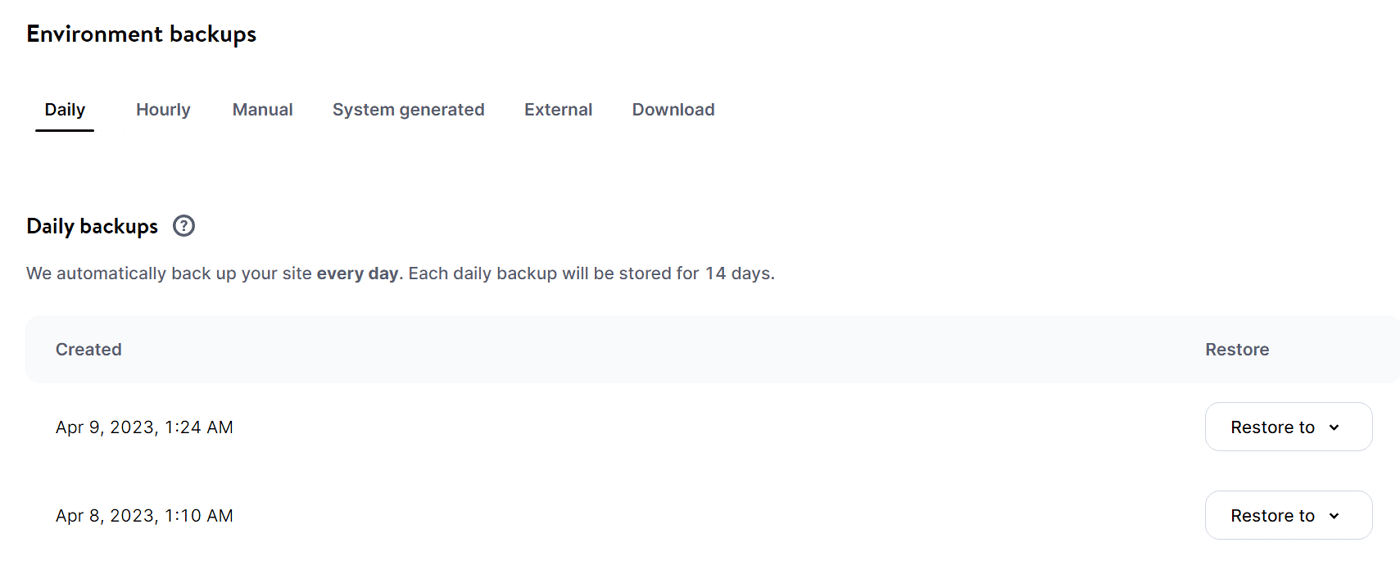No matter what device or software you’re using, there’s always a risk of data becoming corrupted. When applied to databases, “corrupted” means that some or all the information within the tables might be impossible to read or access. There are a lot of reasons this can happen, and it’s vital to know how to fix it.
Fortunately, it’s easier than you might expect to repair a MySQL table. There are several ways to go about it, including using built-in MySQL repair tools and database management software. It’s very likely that you’ll be able to recover all of your data.
In this article, we’ll talk about how database corruption happens and explain how to check your tables for errors. Then we’ll go over four methods to repair MySQL databases so you’re prepared for any situation. Let’s get to it!
What Causes a MySQL Table To Become Corrupted?
Data corruption refers to errors in computer data that can occur during writing, reading, storage, or processing. In MySQL tables (and MongoDB or MariaDB tables), corruption can cause data loss, hinder database performance, or even make the tables unreadable.
In other words, a table is corrupted when there’s an issue with the integrity of the data, or the database software can’t interpret that data.
There are many reasons a MySQL table can become corrupted, including:
- Hardware issues. Faulty hardware components, such as hard drives or memory, can introduce errors in your data.
- Software bugs. Bugs in MySQL or the operating system can lead to data corruption, particularly if they cause crashes or unexpected behavior.
- Power outages. Sudden power failures can interrupt the data-writing processes, resulting in incomplete or corrupted data.
- Improper shutdowns. If MySQL or the server is not shut down properly, data may not be written to disk correctly, leading to corruption.
- File system errors. Issues with the underlying file system can cause data corruption or even data loss.
- Malware or hacking attempts. Malicious software or unauthorized access can lead to data corruption, either deliberately or inadvertently.
The best way to avoid many of these problems is to use a secure database hosting environment. If your web host offers access to quality hardware and performance, you’re less likely to have an issue with database corruption.
How Can You Check a MySQL Table for Errors?
If you’re concerned about potential corruption, you can use the “CHECK TABLE” command to check a database table for errors. This command examines the table’s structure and data for any inconsistencies or corrupted data.
The manual way to do this is by using the terminal to run the CHECK TABLE command. To do this, you’ll need to open the MySQL command line, connect to the database that contains the table, and execute this command:
CHECK TABLE table_name;
Replace “table_name” with the name of the table you want to check. The command will return a status message indicating whether the table is okay, has warnings, or contains errors.
However, there are easier ways to perform this task. If you have access to a database management tool, such as phpMyAdmin, you can use it to check tables through a user interface. To do this, access your site’s database using phpMyAdmin, select a database, and choose the tables you want to check:

After selecting the Check Table option, click on Go. phpMyAdmin will return a new page that offers status overviews for each table. If a table is unharmed, you’ll see a simple OK message.
How Long Does It Take To Repair a MySQL Table?
The time it takes to repair a MySQL table depends on several factors, including the size of the table, the extent of the corruption, and the repair method you choose. In some cases, this task can take only a few minutes, while in others, it might be a time-consuming process that requires you to try multiple approaches.
The most time-efficient solution for repairing a corrupted MySQL table is to restore the database from a recent backup. This can save you the time and effort of manually repairing the table, particularly if the corruption is extensive or difficult to resolve.
However, this approach assumes that you have a reliable and recent backup available. In a few sections, we’ll talk about how to perform a database restoration from a backup.
How To Repair MySQL Tables (4 Proven Methods)
In this section, we’ll explore four ways to repair a MySQL table. These techniques are all relatively simple, although you may need to try more than one of them until you find a solution that works for you.
1. Repair MySQL Tables in phpMyAdmin
phpMyAdmin is one of the most popular database management tools on the market. Most web hosts enable you to use phpMyAdmin to access and edit your databases, including Kinsta.
The process for accessing the database will vary depending on your web host’s control panel. If you’re using MyKinsta, select the site that the database belongs to. Go to the Info tab and scroll down to the Database access section.
The database username and password will be accessible here:

Click on Open phpMyAdmin and use your credentials to log in. Then choose the corrupted database. phpMyAdmin will list all of the tables in that database. You can either select all of them using the checkboxes to the left or only the corrupted tables.
Once you choose the tables, you want to repair, scroll down and open the With selected drop-down menu. Pick the Repair table option:

Keep in mind that not all databases support the phpMyAdmin repair function. If yours does, you’ll see a success message alongside each table’s name on the next page.
If you’re not sure which tables need repair, return to the previous section on how to check databases for corruption. You can use the Check feature in phpMyAdmin to search tables for errors, and then repair them.
2. Use the MySQL Command Line
If you’re comfortable using the command line and you have Secure Shell (SSH) access to your site’s server, this is another way to repair a MySQL table. First, you’ll need to access the MySQL shell, which will typically be installed alongside MySQL.
With the MySQL shell, you’ll be able to connect to the database from the terminal. To do this, use the following command:
mysql -u -p
The -u and -p stand for the database username and password. In practice, the command should look something like this:
$ mysql -u username1 -p
Once you enter the username, the MySQL shell will ask for the password. If you’re successful, the MySQL command prompt will appear.
From there, you can use any MySQL command you want. The one you need to repair the database is:
REPAIR TABLE table_name;
You’ll need to replace the table_name placeholder with the name of the table you want to repair. MySQL will attempt to fix the table, and the shell will display a status message indicating the results of the repair process.
In most cases, we recommend using a graphical user interface or database management tool such as phpMyAdmin. However, if you’re comfortable using the command line and you know the name of the table you want to repair, this approach will work just as well.
3. Restore the Database from a Backup
If you have a recent backup of your database, you can restore it to recover from table corruption. This is often the fastest and most reliable method for addressing severe corruption issues.
Some web hosts provide automatic full-site backups that include the database. Here at Kinsta, you get daily backups of your website, which you can restore from the MyKinsta dashboard at any time:

We also offer database hosting services, which is perfect if you don’t need to host a full website. Our database hosting environments are designed to protect against data corruption due to hardware failures. Moreover, the databases also back up automatically. You can restore your database to a previous backup at any point.
Not all web hosts offer automatic backups, however. If yours doesn’t, you’ll need to back up the website and the database manually. Alternatively, if you’re using WordPress, you can rely on backup plugins.
4. Use Third-Party Database Repair Tools
There are several third-party tools you can use to repair a MySQL table, such as Stellar Repair for MySQL and SysTools SQL Recovery. These tools can help you recover data from corrupted tables and repair issues that may be difficult to resolve using built-in MySQL utilities.
Depending on which tool you use, the process can be as simple as exporting the corrupt database in a .xml file (which you can do using phpMyAdmin) and analyzing it using the repair software.
The software should be able to detect data corruption issues and repair them automatically. Once the repair is complete, you can use the import function in phpMyAdmin (or whichever database management tool you use) to overwrite the corrupted information.
Keep in mind that your experience might vary depending on which tool you use. Some database repair software, such as SysTools SQL Recovery, requires you to buy a license. Purchasing expensive software to repair the database is only worthwhile if the information is critical and every other repair method has already failed.
Summary
A corrupted database might sound like an unsolvable problem, but it’s often easy to fix. Considering how popular MySQL is, it should come as no surprise that there are a lot of ways to repair corrupted MySQL databases. In most cases, you don’t even need a lot of familiarity with how databases work in order to repair them.
If you have access to phpMyAdmin, that software makes it easy to check database tables for errors and repair them. You can also instruct MySQL to repair any table from the command line if you’re comfortable with that system. However, if you have access to database backups, restoring them is usually the easiest way to fix corrupted tables.
Do you have any other questions about how to use MySQL to repair a table? Let’s talk about them in the comments section below!



